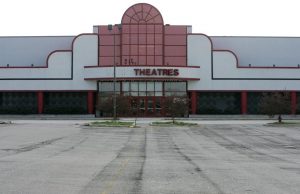The Great Retail Retrofit
Author: Richard FloridaOutlet: CITYLABPublished: December 20, 2017Link to Article Articles 0
Richard Florida describes how the “retail apocalypse” presents an opportunity to re-think and re-energize our communities in the wake of ongoing bankruptcies of chain stores, high-end retailers, suburban malls and metropolitan flagships. With hundreds of thousands of jobs lost, and more to come, Sprawl Repair presents a series of strategies for retrofitting communities at any scale.
“WeWork’s takeover of Lord & Taylor could be a good portent for urban economies. Work, not shopping, is the key to urban productivity and growth. … higher urban rents… are a function of higher urban productivity.
As talented people and high-paying jobs move back to cities, there is demand for more office space. But smaller companies and gig-economy workers need flexible coworking spaces that companies such as WeWork provide, and they need affordable living spaces as well. Both of these can be built in the shell of former retail spaces.
Educational and healthcare facilities, two land use types that are growing as retail shrinks, are a logical fit for these large, boxy spaces.
Mall retrofits can also help with resilience and sustainability efforts. Dunham-Jones and Williamson estimate that 10 such projects have been transformed into green infrastructure or parks.
Some of the most ambitious mall redevelopments are becoming mixed-use neighborhoods.
The Villa Italia Mall in Lakewood, Colorado, outside Denver, was almost completely demolished to make way for a new street grid lined with offices, arts facilities, parks, and residences, as well as new stores. The project is already generating four times the tax revenues that the old mall did.
Dunham-Jones and Williamson estimate that there as many as 650 mall retrofits in some phase of development across the country. From megachurches to indoor paintball parks, former malls and retail spaces are being converted to all manner of uses that better reflect the way we live.”